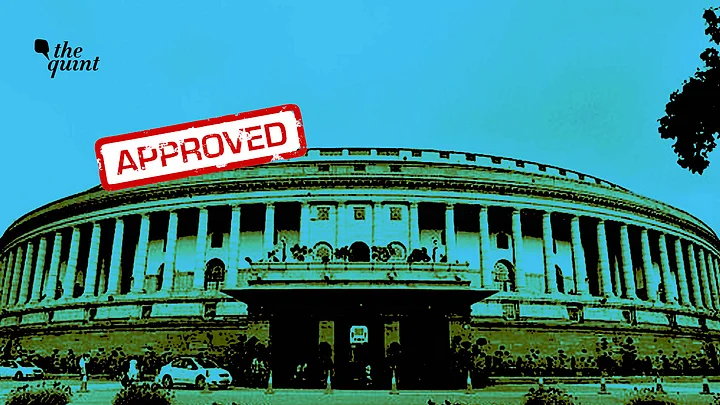For a nationally significant project that encompasses the area around Rajpath, like the Central Vista redevelopment project does, why is environment clearance being sought only for a small part of the project — the new Parliament building?
This is in direct contrast to the Central Public Works Department (CPWD) tender for the Central Vista, wherein bids were invited “to re-plan the entire Central Vista area from the gates of Rashtrapati Bhavan up to India Gate, an area of approximately 4 square kilometres.”
In the application, accessed exclusively by The Quint, environment clearance has been sought for “Expansion and Renovation of Existing Parliament Building.” However, the entire Central Vista project, as defined in the CPWD tender, covers “Development/Redevelopment of Parliament Building, Common Central Secretariat and Central Vista at New Delhi.”
The Quint has reached out to the CPWD engineer specified as the applicant on the environment clearance request for the new Parliament, the Special Director General of the Northern Region, the Directorate General and the Directorate General (Planning) for their comments. The story will be updated as and when they reply.
What does the Green Clearance Request for the New Parliament Say?
The revamp of the new Parliament building has been classified as a “building and construction project” under Schedule 8(a) of the Environment Impact Assessment Notification, 2006.
The application filed specifies that the project is under Category B2. Filing of environment clearance under this category, according to the EIA rules, means two important things – the project will not have a public consultation and there will be no environment impact assessment (EIA) report.
According to environmental activist Rajeev Suri, filing of environment clearance only for the Parliament building is an attempt at “circumventing the threshold levels that make it mandatory to seek an environmental assessment.” He says, “The Central Vista project qualifies for what's called a cumulative impact assessment. A cumulative impact means that this entire project is three-and-a-half kilometres, what's going to be the impact of that on the environment?”
What Would the Clearance Application for the Whole Central Vista Look Like?
Under the EIA rules, all “building and construction projects,” which are more than and equal to 20,000 square metres and less than 1,50,000 square metres of built-up area are under Schedule 8(a). According to the application, accessed by The Quint, the total built-up area after the proposed expansion is specified as 1,04,740 square metres. So, a larger project which includes the new Parliament, a new Central Secretariat and a revamped Central Vista, as specified by the CPWD tender, will supersede the 1,50,000 square meters threshold.
Such a project – exceeding the threshold limit of 1,50,000 – could be classified as “Townships and Area Development Projects” and come under Schedule 8(b). According to a 2014 amendment to the EIA Rules, 2006, projects classified under this Schedule will be put in Category B1, which means they shall require an Environment Impact Assessment report.
Ambiguity on Central Vista Redevelopment
However, it’s important to note that the ambiguity on the full area of the proposed Central Vista redevelopment persists – and with it, the ambiguity on the category of the EIA Rules, 2006 that the whole Central Vista project will come under.
Seeking environmental clearances through parcels of land has also been observed in the government's Chardham development project, which seeks to provide connectivity to four holy towns in Uttarakhand, according to senior Supreme Court advocate Sanjay Parekh who fought the case on behalf of the NGO petitioner.
Parekh says, “A project needs to be taken in its entirety. It should require proper clearance under the 2006 EIA notification, and it can’t be divided into segments to avoid taking environmental clearance.”
The lack of clarity on the Central Vista project is another issue. Kanchi Kohli, a senior researcher at the Centre for Policy Research, who works on environment regulation of urban construction projects specifies the problem, adding how “breaking up” the Central Vista project is “underplaying” its significance.
She says, “The entire appraisal and determination of which category, the Central Vista project should fall in, will be determined only when they disclose the whole thing. Submissions have been made saying that the project also violates rules which say that if Central Vista is an integrated project, then you need to have separate Environment Impact Assessment reports and a full Environment Impact Assessment report of the project.”
Why Such Opacity, Ask Activists
The lack of clarity on the plans for the proposed Central Vista redevelopment project, and the absence of any public consultation on the new Parliament building, is another cause for concern for activists. Questioning why the plans for the Central Vista redevelopment were not “put in the public domain,” Suri stated the possible objections to the new Parliament building he believes should have been raised in a public consultation. He says, “I would say that the with the existing Parliament building, they haven't done an empirical study. Or come out with data that the structure can't meet the need of existing number of Parliamentarians.”
Irrespective of how the Central Vista project will ultimately be specified, the question remains: Why is the environment clearance for the proposed redevelopment being filed only for the new Parliament building?
(At The Quint, we question everything. Play an active role in shaping our journalism by becoming a member today.)
